|
|
||||||||||
This summer I visited Landnámssýningin Reykjavík 871±2 - The Settlement Exhibition in Iceland, where the Reykjavík City Museum had brought four of the well-preserved historical manuscripts of the Settlement Sagas out from their vaults - for us to admire with our naked eyes. The Saga literature is our history and cultural heritage, as well as the inspiration of some of the greatest authors throughout times, the oldest ones being hand printed on vellum (skins) with ink made from boiled bearberry and various herbs. And as the museum wrote: "The world of the sagas is unique and internally consistent: a portrait of a new society in a previously uninhabited land. These narratives have no parallel in world literature." ➻ Kjalnesingasaga - The Saga of the People of Kjalarnes (AM 471 4to) The saga concerns the people who settled at Kjalarnes, a region north of Reykjavík. Beginning with the story about Helgi bjóla (brother of the famous Auðr djúpúðga) who arrived from the Hebrides early during the settlement of Iceland, the saga describes his marriage with Þórný Ingólfsdóttir and their descendants as well as other early inhabitants of the area. In addition to the Saga of the people of Kjalarnes, the manuscript also contains several other Icelandic family sagas, legendary sagas and a chivalric saga. It is dated to the late 1400's, and has 108 vellum leaves buckled and bound between wooden boards, with leaves from a latin liturgical book used as flyleaves. 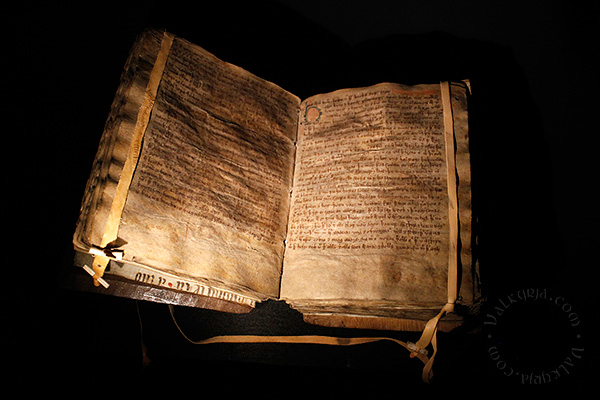
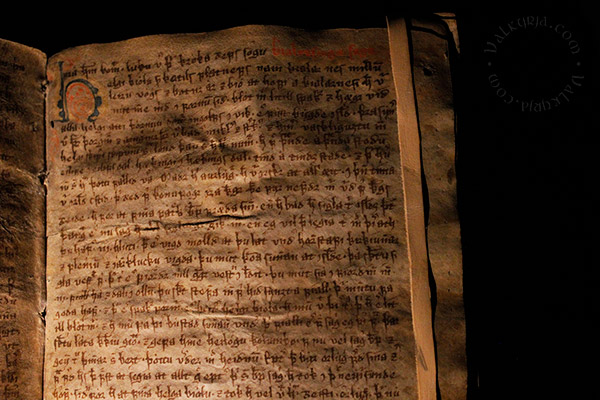
The Book of Icelanders is a brief account of the Icelandic nation from its birth to about 1120, and includes the settlement, the most prominent settlers, the first laws and the founding of the Alþingi (national parliament) and the Christianization of Iceland. The original vellum codex believed to have dated from about 1200, perished or disappeared not long after this copy was made around 1650. (And look, people used to scribble in the margins back then too!) 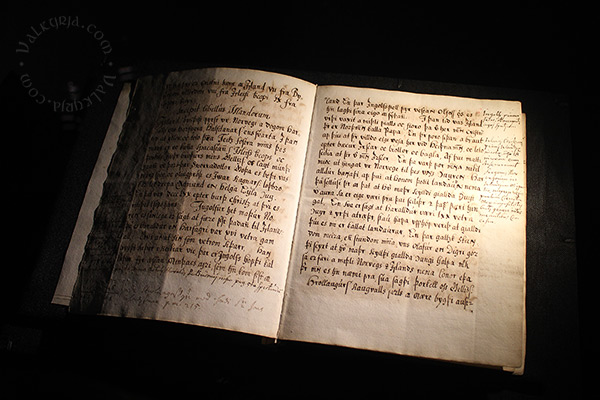
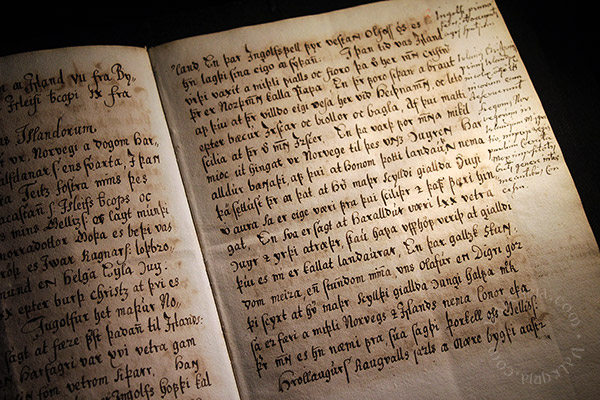
As the Icelandic nation grew, the need to establish laws became more prominent. The Alþingi was established in 930 (being the oldest still existing parliamentary institution in the world alongside the Jamtamót of Jämtland. While the first law code was called Grágás, Jónsbók suspended earlier laws as Iceland was brought under Norwegian rule about 1262-1264. The Jónsbók law code remained for the four succeeding centuries, and had a great influence on the preservation of the Icelandic language, as well as in shaping the Icelandic law system. Many exemplars of Jónsbók were made, and this one dating from 1320-1330 is one of the oldest to survive. 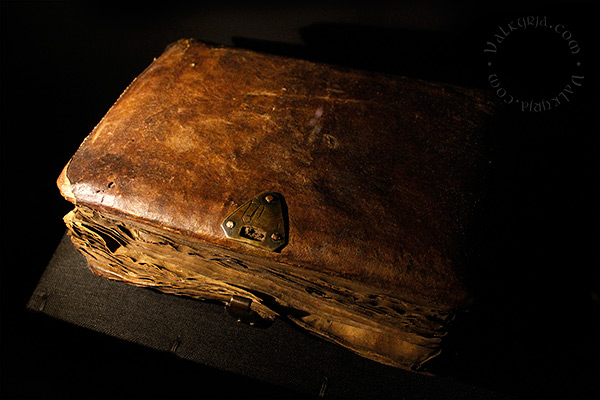
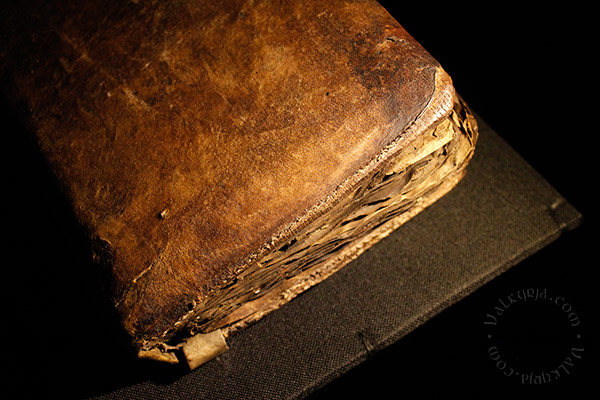
Landnámabók tells us how travellers from Norway and the British Isles came to settle Iceland from approx. year 874. It lists the names of about 430 men and women, as well as 600 farms and accounts of the settlers origins, lands, families, animals and various vættr (beings of the Norse mythology). Much of the material in Landnámabók has been replicated in different Icelandic family sagas. The work on Landnámabók is thought to have begun around 1120, but nothing from that era has survived. Meanwhile, an unknown but skilled scribe made this paper copy sometime in the late 1600's. 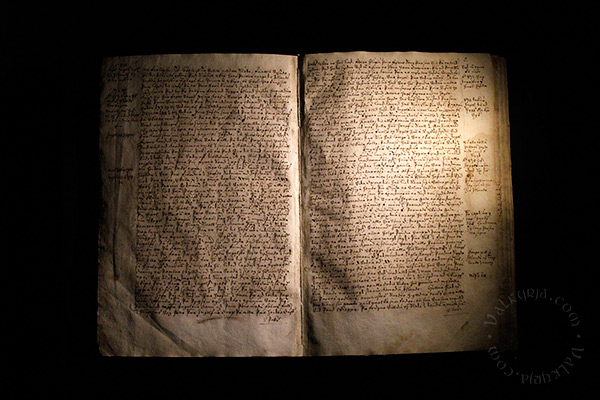
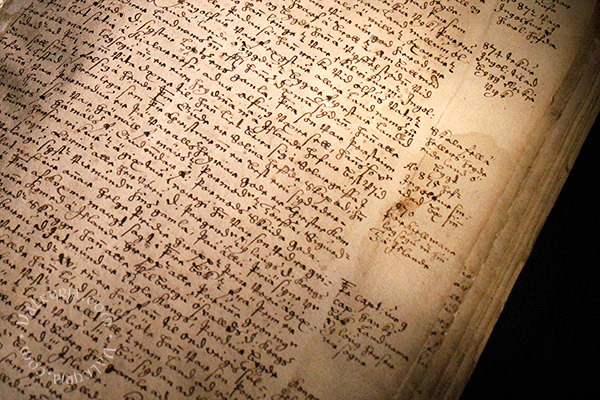
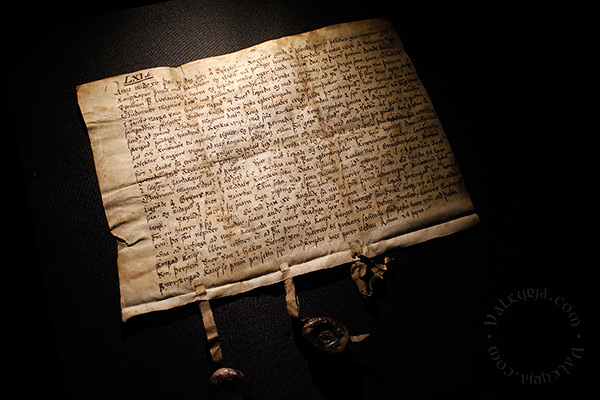
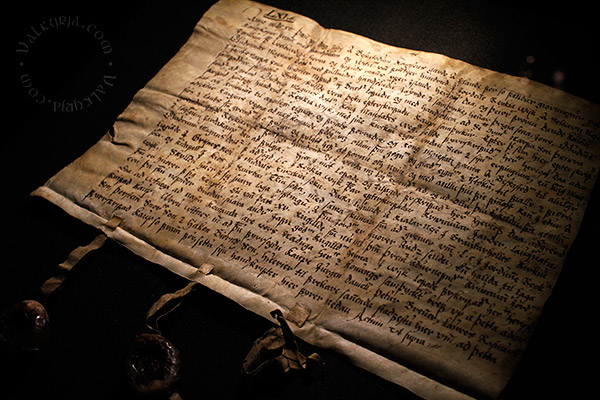
# Comments |
 
|
|||||||||
|
||||||||||
